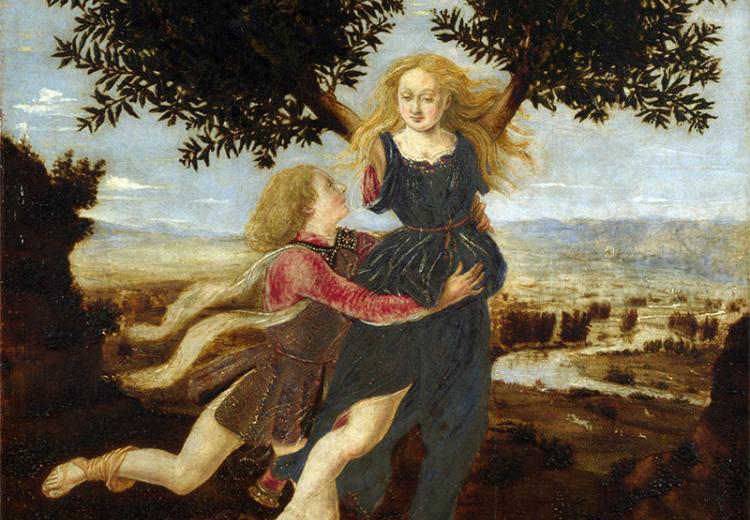Ovid’s Metamorphoses

Antonio del Pollaiuolo, Apollo and Daphne.
The Metamorphoses by Publius Ovidius Naso (Ovid) is considered one of the most influential books in the Western canon and an extremely important source for classical mythology. Since the Middle Ages, writers, painters, and sculptors have been drawing on Ovid’s stories of the passions, adventures, and battles of the gods and heroes for inspiration. Even modern filmmakers use these myths as the foundation for their screenplays (i.e. the portrayal of Achilles in Troy and the 1930s-style retelling of Odysseus’ wanderings in O Brother Where Art Thou?) Despite his popularity in his own lifetime, this Latin author was exiled from Rome in 8 CE by the Emperor Augustus. Thanks to Ovid’s imaginative rendering of these mythological figures and events, the stories still continue to have meaning for us today.
The lessons in this unit comprise a series of comparisons. The first lesson compares similarities between Genesis and The Metamorphoses. Students consider the creative elements within two stories of creation and the destructive elements within two stories of a great flood that all but obliterated humankind. The second lesson has students consider the story of Orpheus, the lover who tries to rescue his beloved wife from death itself. They then compare Ovid’s mythic passages with the poem entitled “Eurydice” by H.D., a twentieth-century poet. In the third lesson, students turn from Ovid’s legacy in literature to visual art. They explore great art works that drew inspiration from Ovid and compare how the same story can be rendered in two different mediums.
Guiding Questions
How do creation and destruction narratives, as told in The Metamorphoses, compare with those found in Genesis?
How have the characters, stories, and themes in The Metamorphoses been used as a source for later poets and artists?
How have Ovid’s characters, stories, and themes been transformed into original artistic depictions?
